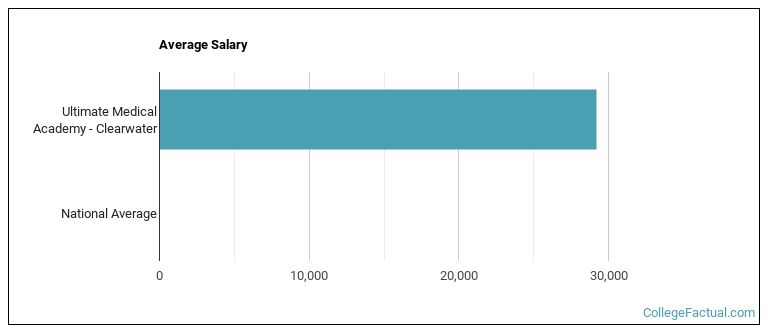 by our College Data Analytics Team
by our College Data Analytics TeamExplore the best ranked schools for the programs you are most interested in.
UMA Clearwater was not ranked in College Factual's Best Overall Colleges report this year. This may be because not enough data was available.
See all of the rankings for Ultimate Medical Academy - Clearwater.
Since Ultimate Medical Academy - Clearwater has an open admissions policy, being accepted to the school isn't that hard. However, a full basic things - such as a high school diploma or equivalent - may be required. Also, go over your application to make sure it is complete before you submit it.
The student to faculty ratio is often used as a measure to gauge how much access students will have to their professors - the lower the number, the better. At Ultimate Medical Academy - Clearwater, this rate is 19 to 1, which is high when compared to the national average of 15 to 1.
When estimating how much access students will have to their teachers, some people like to look at what percentage of faculty members are full time. This is because part-time teachers may not have as much time to spend on campus as their full-time counterparts.
The full-time faculty percentage at Ultimate Medical Academy - Clearwater is 100%. This is higher than the national average of 47%.
The freshmen retention rate of 79% tells us that most first-year, full-time students like Ultimate Medical Academy - Clearwater enough to come back for another year. This is a fair bit higher than the national average of 68%. That's certainly something to check off in the good column about the school.
During the 2017-2018 academic year, there were 7,124 undergraduates at UMA Clearwater with 7,048 being full-time and 76 being part-time.
| $0-30 K | $30K-48K | $48-75 | $75-110K | $110K + |
|---|---|---|---|---|
| $18,134 | $18,562 | $19,774 | $21,613 | $20,968 |
The net price is calculated by adding tuition, room, board and other costs and subtracting financial aid.Note that the net price is typically less than the published for a school. For more information on the sticker price of UMA Clearwater, see our tuition and fees and room and board pages.
While almost two-thirds of students nationwide take out loans to pay for college, the percentage may be quite different for the school you plan on attending. At UMA Clearwater, approximately 76% of students took out student loans averaging $2,706 a year. That adds up to $10,824 over four years for those students.
Get more details about paying for Ultimate Medical Academy - Clearwater.

See which majors at Ultimate Medical Academy - Clearwater make the most money.
Get more details about the location of Ultimate Medical Academy - Clearwater.

Contact details for UMA Clearwater are given below.
| Contact Details | |
|---|---|
| Address: | 1255 Cleveland St, Clearwater, FL 33755-4933 |
| Phone: | 727-298-8685 |
| Website: | https://www.ultimatemedical.edu/ |
| Most Popular Majors | Bachelor’s Degrees | Average Salary of Graduates |
|---|---|---|
| Health & Medical Administrative Services | 6,496 | NA |
| Human Services | 676 | NA |
| Allied Health & Medical Assisting Services | 239 | NA |
| Practical Nursing & Nursing Assistants | 81 | NA |
| Accounting | 55 | NA |
| Dental Support Services | 26 | NA |
| Clinical/Medical Laboratory Science | 2 | NA |
Online courses area a great option for busy, working students as well as for those who have scheduling conflicts and want to study on their own time. As time goes by, expect to see more and more online learning options become available.
In 2022-2023, 6,288 students took at least one online class at Ultimate Medical Academy - Clearwater. This is an increase from the 5,962 students who took online classes the previous year.
| Year | Took at Least One Online Class | Took All Classes Online |
|---|---|---|
| 2022-2023 | 6,288 | 6,288 |
| 2021-2022 | 5,962 | 5,962 |
| 2020-2021 | 6,967 | 6,967 |
| 2018-2019 | 18,643 | 18,643 |
Learn more about online learning at Ultimate Medical Academy - Clearwater.
Footnotes
*The racial-ethnic minorities count is calculated by taking the total number of students and subtracting white students, international students, and students whose race/ethnicity was unknown. This number is then divided by the total number of students at the school to obtain the racial-ethnic minorities percentage.
References
More about our data sources and methodologies.